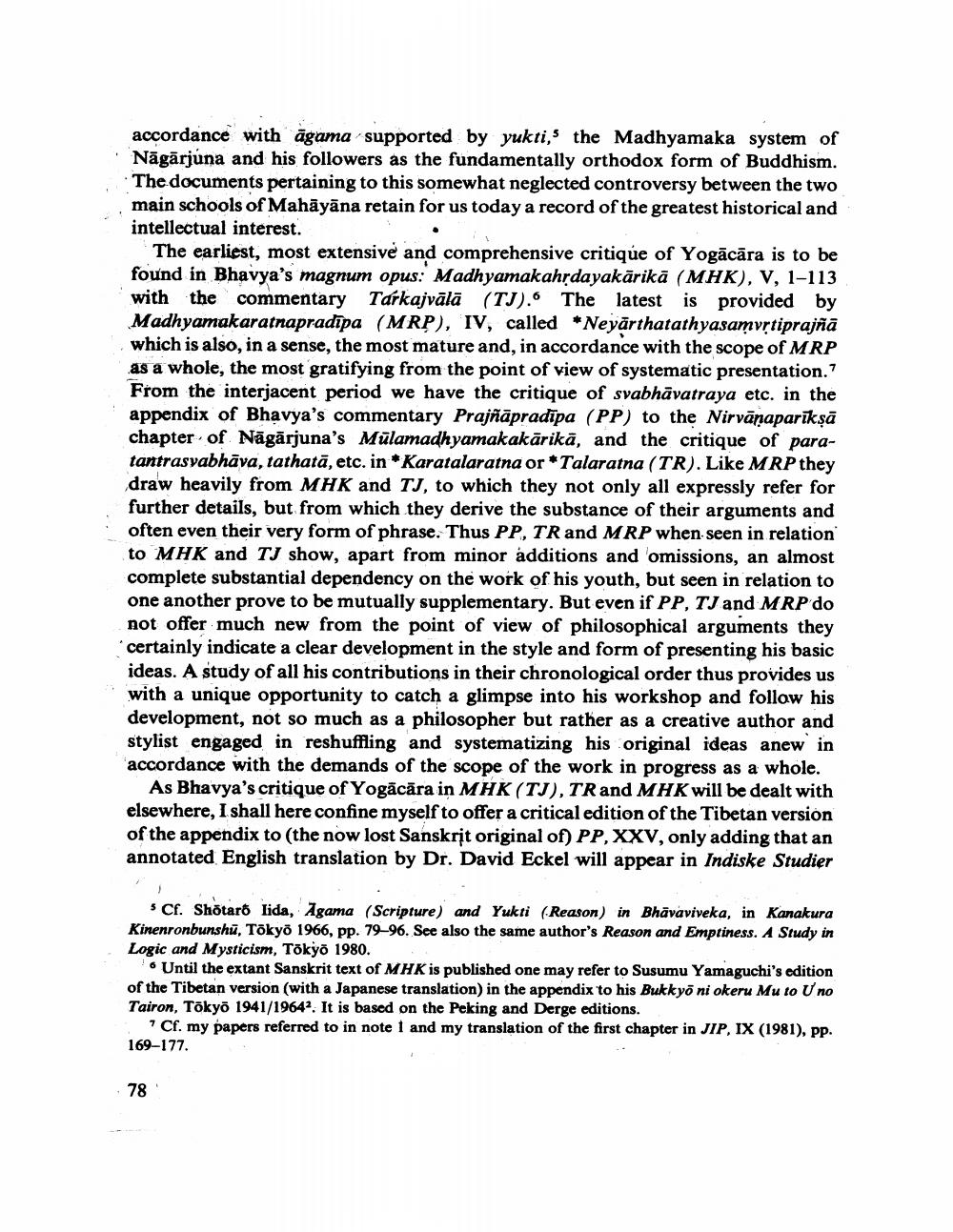Book Title: Bhavyas Controversy With Yogacara In Appendix To Prajnapradipa Chapter XXV Author(s): Christian Lindtner Publisher: Christian Lindtner View full book textPage 2
________________ accordance with agama supported by yukti, the Madhyamaka system of Nägarjuna and his followers as the fundamentally orthodox form of Buddhism. The documents pertaining to this somewhat neglected controversy between the two main schools of Mahäyäna retain for us today a record of the greatest historical and intellectual interest. The earliest, most extensive and comprehensive critique of Yogacara is to be found in Bhavya's magnum opus: Madhyamakahṛdayakärikä (MHK), V, 1-113 with the commentary Tarkajvälä (TJ). The latest is provided by Madhyamakaratnapradipa (MRP), IV, called Neyärthatathyasamvṛtiprajñā which is also, in a sense, the most mature and, in accordance with the scope of MRP as a whole, the most gratifying from the point of view of systematic presentation." From the interjacent period we have the critique of svabhävatraya etc. in the appendix of Bhavya's commentary Prajñāpradipa (PP) to the Nirväṇaparikṣā chapter of Nägärjuna's Mülamadhyamakakärikä, and the critique of paratantrasvabhava, tathata, etc. in *Karatalaratna or *Talaratna (TR). Like MRP they draw heavily from MHK and TJ, to which they not only all expressly refer for further details, but from which they derive the substance of their arguments and often even their very form of phrase. Thus PP, TR and MRP when seen in relation to MHK and TJ show, apart from minor additions and omissions, an almost complete substantial dependency on the work of his youth, but seen in relation to one another prove to be mutually supplementary. But even if PP, TJ and MRP do not offer much new from the point of view of philosophical arguments they certainly indicate a clear development in the style and form of presenting his basic ideas. A study of all his contributions in their chronological order thus provides us with a unique opportunity to catch a glimpse into his workshop and follow his development, not so much as a philosopher but rather as a creative author and stylist engaged in reshuffling and systematizing his original ideas anew in accordance with the demands of the scope of the work in progress as a whole. As Bhavya's critique of Yogacara in MHK (TJ), TR and MHK will be dealt with elsewhere, I shall here confine myself to offer a critical edition of the Tibetan version of the appendix to (the now lost Sanskrit original of) PP, XXV, only adding that an annotated English translation by Dr. David Eckel will appear in Indiske Studier 5 Cf. Shotaro lida, Agama (Scripture) and Yukti (Reason) in Bhavaviveka, in Kanakura Kinenronbunshu, Tokyo 1966, pp. 79-96. See also the same author's Reason and Emptiness. A Study in Logic and Mysticism, Tokyo 1980. 6 Until the extant Sanskrit text of MHK is published one may refer to Susumu Yamaguchi's edition of the Tibetan version (with a Japanese translation) in the appendix to his Bukkyo ni okeru Mu to Uno Tairon, Tokyo 1941/19642. It is based on the Peking and Derge editions. 7 Cf. my papers referred to in note I and my translation of the first chapter in JIP, IX (1981), pp. 169-177. 78Page Navigation
1 2 3 4 5 6 7 8 9 10 11 12 13 14 15 16 17 18 19 20 21
